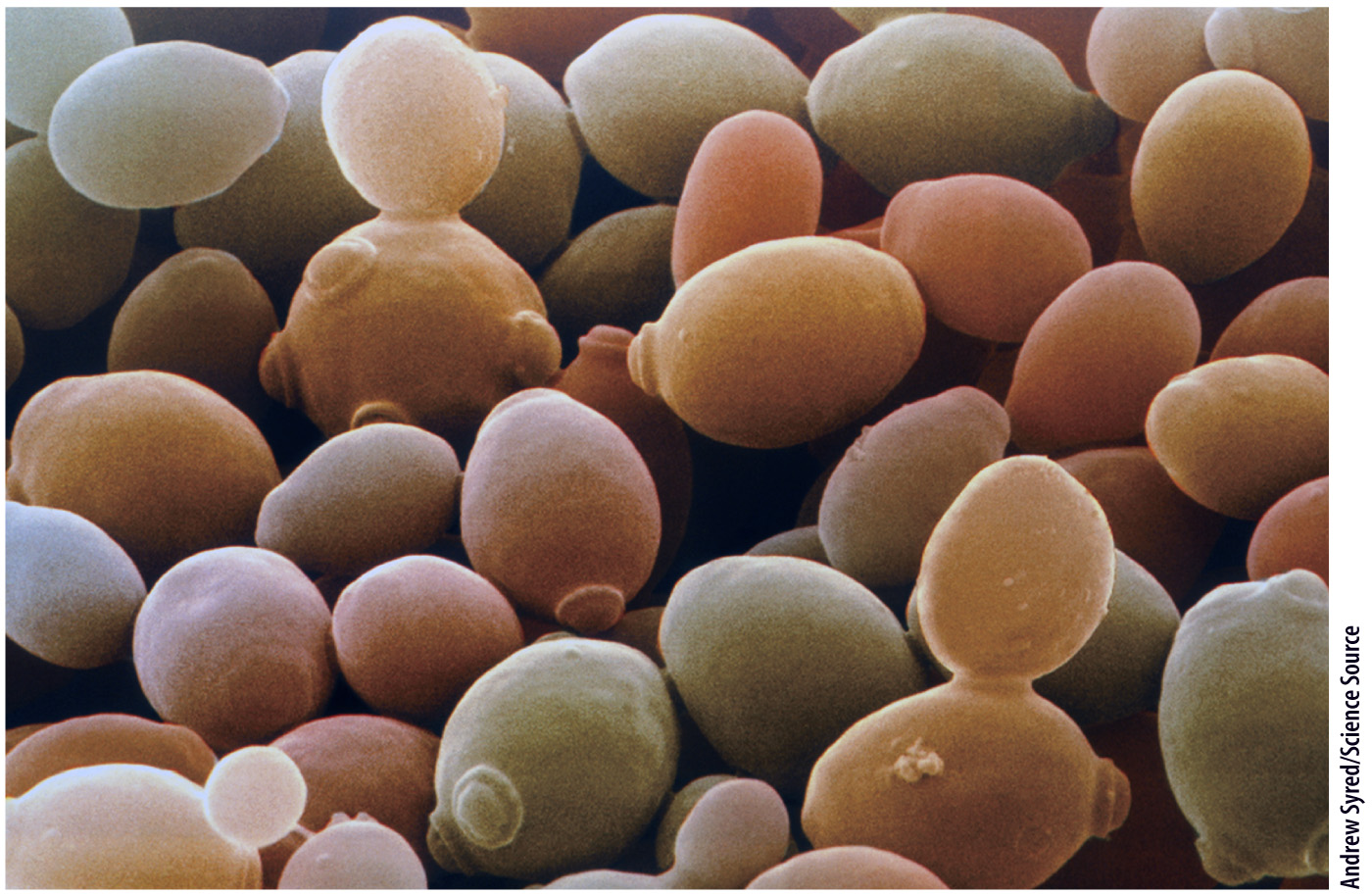Not all fungi produce hyphae.
Yeasts are single-celled fungi found in moist, nutrient-rich environments. In these circumstances, the search for food does not require hyphae. All yeasts are descended from ancestors that developed hyphae, but hyphal development has been lost independently several times. Thus, the lack of hyphae is an example of convergent evolution, in which the same trait develops independently in different lineages in response to similar selective pressures (Chapter 23).
Most yeasts divide by budding. A small outgrowth increases in size and eventually breaks off to form a new cell (Fig. 34.3). The localized outgrowth that results in budding is similar to growth by elongation at hyphal tips. In fact, some yeasts can form hypha-like structures under certain conditions. For example, in Candida albicans, a yeast that infects humans, hyphae are produced during the transition of the fungus from a harmless to a pathogenic form.

FIG. 34.3 The yeast Saccharomyces cerevisiae. Yeasts are unicellular fungi that often divide by budding smaller cells off larger ones.
Page 718
Yeasts are common on the surfaces of plants, and to a lesser extent on the surfaces and in the guts of animals. Humans have long used the yeast Saccharomyces cerevisiae to ferment plant carbohydrates and thereby to produce leavened bread and alcoholic beverages. Saccharomyces cerevisiae is also an important model organism used in laboratory studies of genetics.
